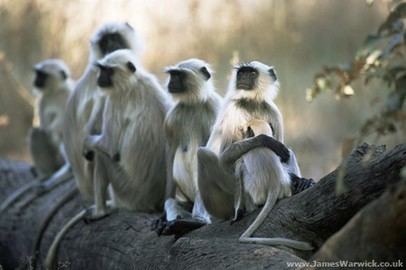Scientific name Colobinae Rank Subfamily | Phylum Chordata | |
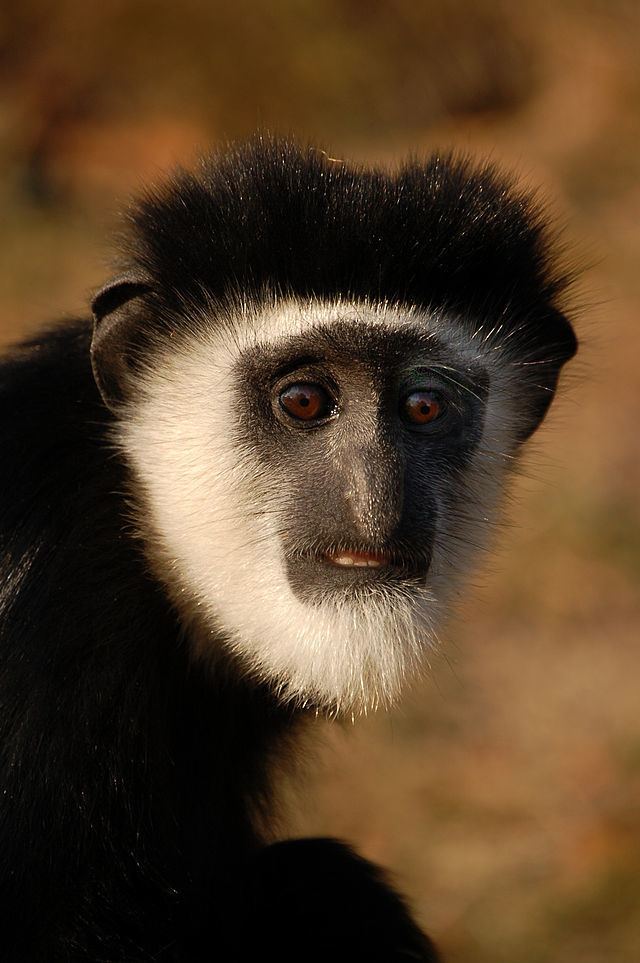 | ||
Lower classifications Gray langur, Black‑and‑white colobus, Proboscis monkey, Lutung, Dusky leaf monkey | ||
The Colobinae are a subfamily of the Old World monkey family that includes 59 species in 10 genera, including the black-and-white colobus, the large-nosed proboscis monkey, and the gray langurs. Some classifications split the colobine monkeys into two tribes, while others split them into three groups. Both classifications put the three African genera Colobus, Piliocolobus, and Procolobus in one group; these genera are distinct in that they have stub thumbs (Greek κολοβός kolobós = "docked"). The various Asian genera are placed into another one or two groups. Analysis of mtDNA confirms the Asian species form two distinct groups, one of langurs and the other of the "odd-nosed" species, but suggests the gray langurs are not closely related to either.
Contents
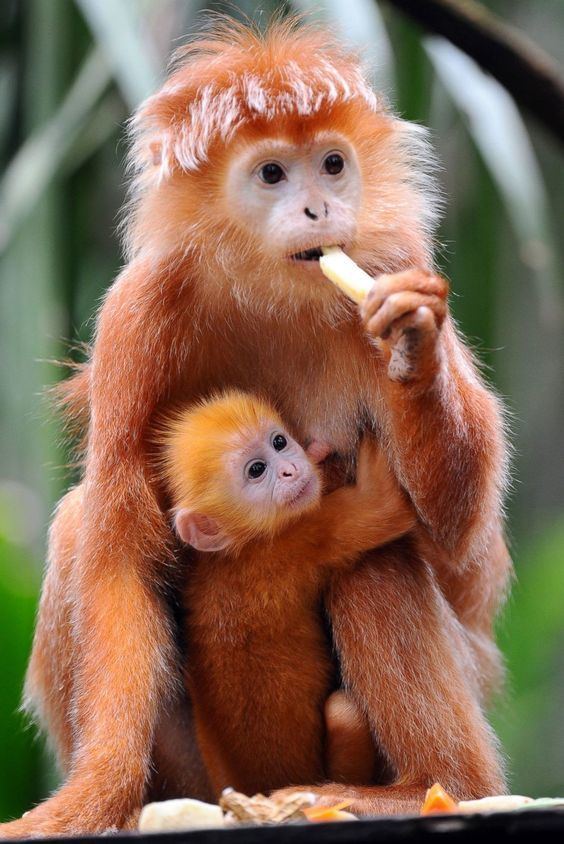
Red shanked douc
Characteristics

Colobines are medium-sized primates with long tails and diverse colorations. The coloring of nearly all the young animals differs remarkably from that of the adults.
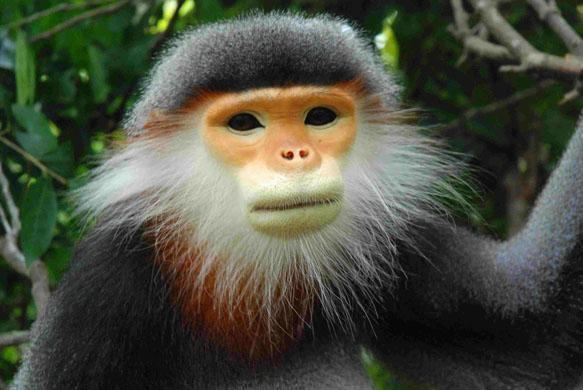
Most species are arboreal, although some live a more terrestrial life. They are found in many different habitats of different climate zones (rain forests, mangroves, mountain forests, and savannah), but not in deserts and other dry areas. They live in groups, but in different group forms.

Colobines are folivorous, meaning their main source of nutrition is leaves. Their diet may also be supplemented with flowers, fruits and the occasional insect. To aid in digestion, particularly of hard-to-digest leaves, they have multichambered, complex stomachs, making them the only ruminant primates. Unlike the other subfamily of Old World monkeys, the Cercopithecinae, they possess no cheek pouches.
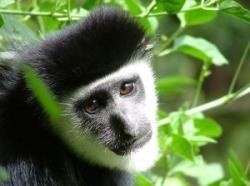
Gestation averages six to seven months. Young are weaned at about one year and are mature at three to six years. Their life expectancy is approximately 20 years.
Classification

Hybrids
Intergeneric hybrids are known to occur within the Colobinae subfamily. In India, gray langurs (Semnopithecus spp.) are known to hybridize with Nilgiri langurs (Trachypithecus johnii).
